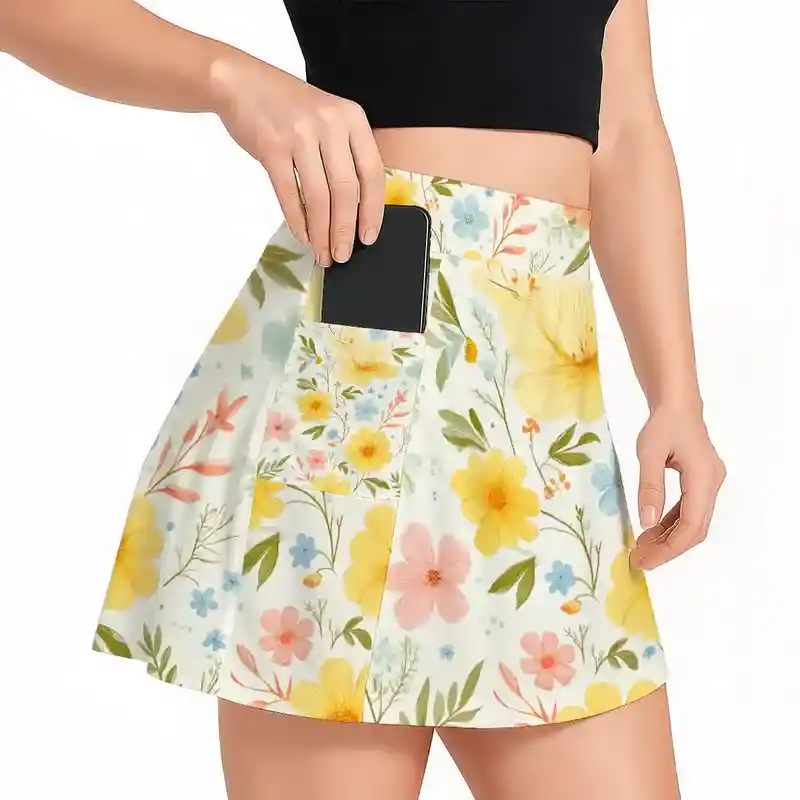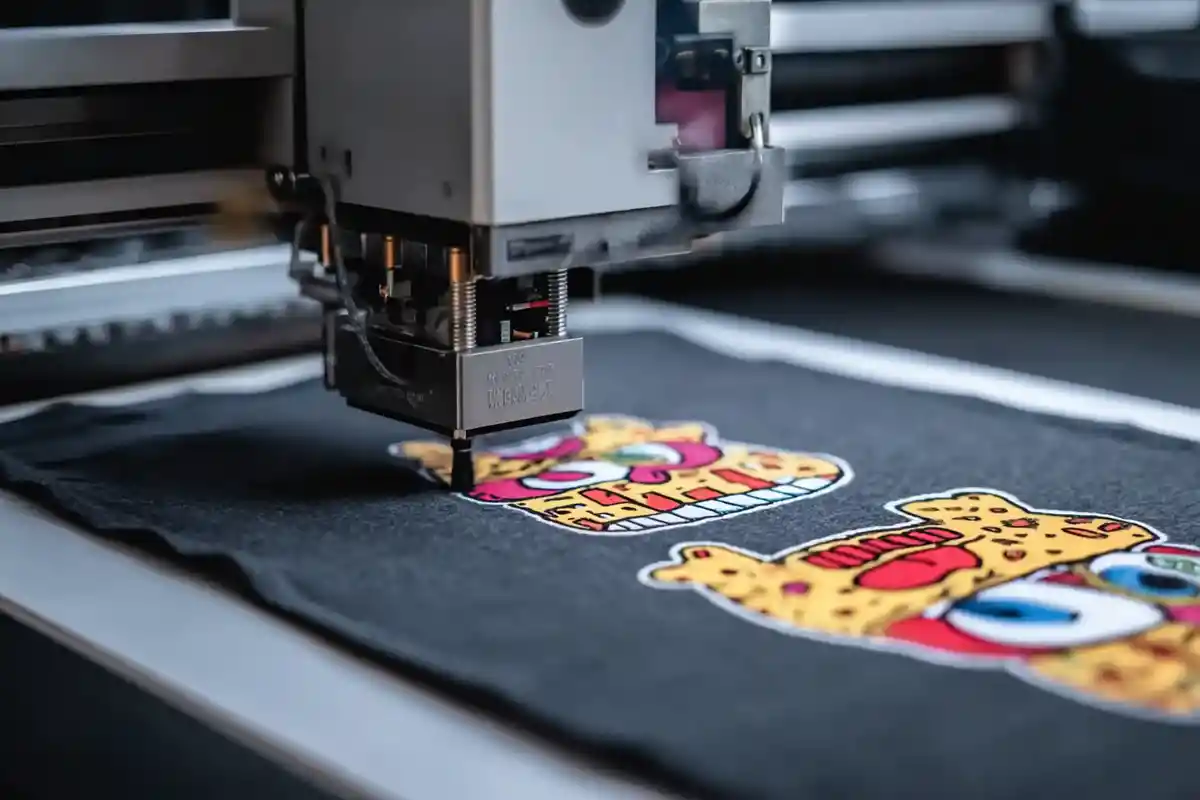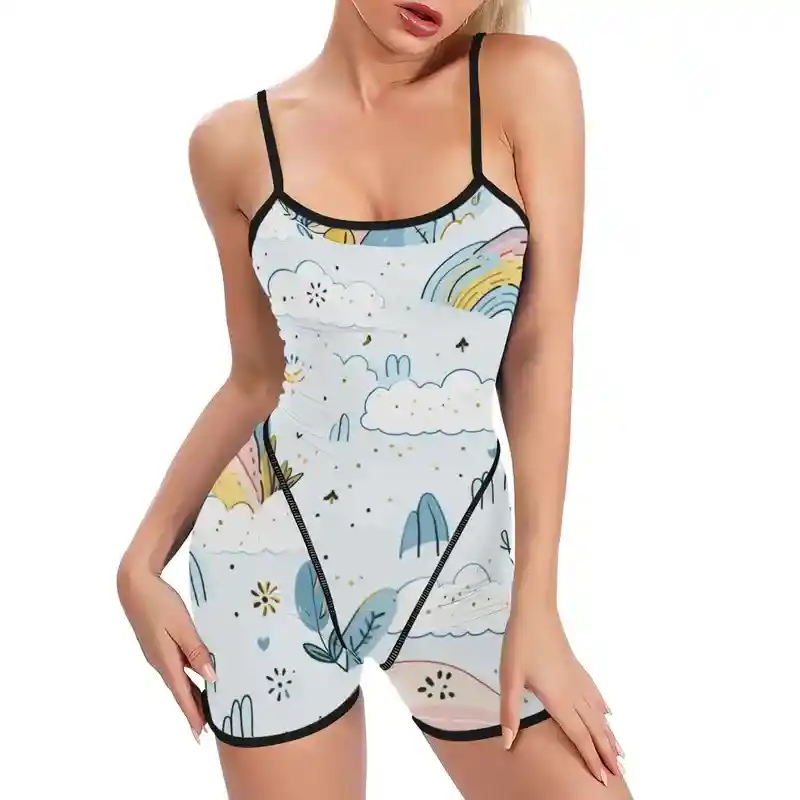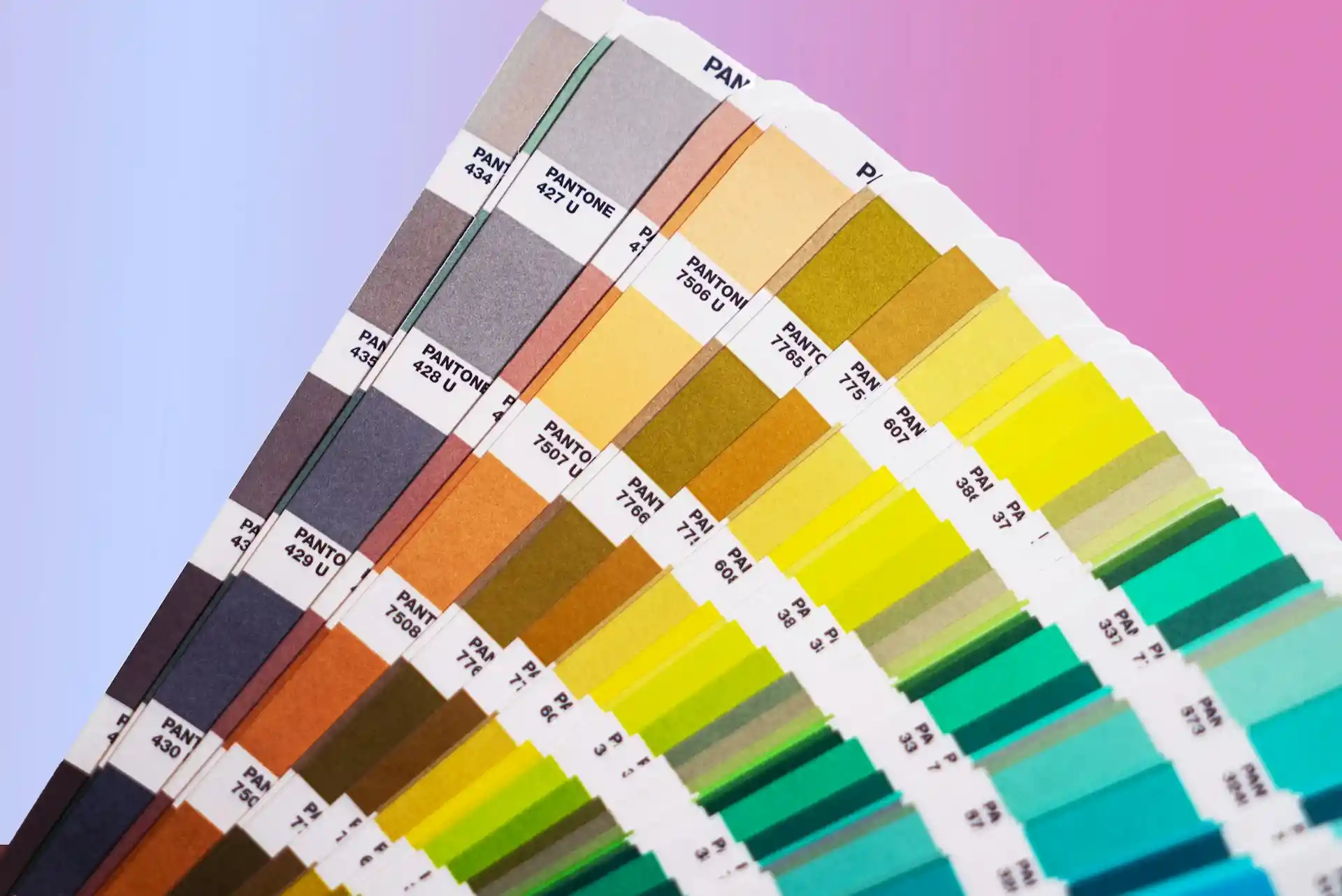
If you're exploring custom apparel or starting a print-on-demand business, you've likely come across two popular methods: sublimation and DTG (direct-to-garment) printing.
Both are popular printing methods, but they work in different ways and give different results. So, how do you know which one is right for your design?
In this blog, we'll break down the key differences between sublimation and DTG printing—so you can make a smart choice before you hit "print."
Learn About Sublimation and DTG Printing
Sublimation Printing
Sublimation printing works by turning solid dye into gas using heat. That gas then bonds with the fibers of a polyester material. Instead of sitting on top of the shirt, the design becomes part of the fabric itself.
This method only works on polyester or polymer-coated items. It also requires light-colored surfaces, since the dye blends with the fabric color.
Sublimation Pros:
- Vivid Colors: Designs come out bright and sharp.
- Long-Lasting Print: The ink becomes part of the fabric, so it doesn't crack or peel.
- Soft Feel: No extra layer—just smooth fabric.
- Great for Full-Prints: You can cover the whole surface with design.
Sublimation Cons:
- Material Limitation: Only works well on light-colored polyester or coated items.
- Not for Dark Fabrics: Colors won't show up on black or dark materials.
- Cotton Issue: Doesn't bond with cotton fabric.

Print on Demand Women's Tennis Skort with Pockets - Women's Clothing - PrintKK
DTG Printing
DTG printing works like an advanced inkjet printer for fabrics. The garment is pretreated to help the ink bond. Then, specialized water-based inks are sprayed directly onto the textile in precise layers, just like printing on paper but with fabric-friendly formulas.
Unlike traditional screen printing, no stencils are needed—great for detailed artwork and small batches.
DTG Pros:
- Cotton Friendly: Works well on 100% cotton shirts.
- High Detail: Great for photos, small text, or complex artwork.
- Good on Dark Colors: Prints on black and dark-colored fabrics.
- No Minimum Order: Easy to print just one shirt.
DTG Cons:
- Slower for Large Orders: Not ideal for bulk printing.
- Surface Limits: Works best on flat surfaces only.
- Ink Durability: May fade a little faster than sublimation over time.

Sublimation vs DTG: What Is the Difference?
1. Print Quality and Durability
Sublimation creates long-lasting prints because the ink turns into gas and embeds into the fabric itself. This means the design won't crack, peel, or fade over time. Even after many washes, the colors stay bright and the design stays sharp.
DTG (Direct-to-Garment) prints sit on top of the fabric. The print looks great at first, but after repeated washing, it may start to fade, especially if printed on lower-quality materials.
For light use and gentle care, DTG holds up well, but sublimation is stronger overall.
2. Printable Area
Sublimation offers edge-to-edge printing. You can cover the whole shirt—front, back, sleeves—with one design. That's perfect if you want an all-over look or full-pattern graphics.
DTG has a more limited print space. Most printers only allow a rectangular area, usually on the chest or back. Full-shirt printing isn't possible with DTG unless you combine it with other processes.
If you need wide coverage, sublimation gives more freedom.
3. Fabric Compatibility
Sublimation works only on synthetic materials like polyester or items with a special polyester coating. It won't stick to cotton or natural fibers. That limits your fabric choices but gives excellent results on polyester.
DTG is made for natural fibers. It works best on 100% cotton, and can also work on blends. If your products are mostly cotton shirts or hoodies, DTG is a better match.
For sportswear and activewear, sublimation is the better fit.

Custom AOP Yoga Romper with Print on Demand - PrintKK
4. Color Vibrancy
Sublimation produces extremely vibrant colors, especially on light-colored polyester. Since the ink becomes part of the fabric, colors appear bright, crisp, and highly detailed. Even photo-quality images come out clear.
DTG also supports full-color printing and fine details, but colors can appear slightly duller, especially on darker fabrics.
DTG printers need a white underbase for dark garments, which can make prints thicker and slightly less vibrant in feel and appearance.
5. Process Sustainability
Sublimation is more eco-friendly in many ways. It doesn't use water during printing, and there's very little ink waste. No harsh chemicals are required, and the process is clean.
DTG uses water-based inks, which is a plus. However, it often needs pretreatment chemicals and daily cleaning cycles. These extra steps use more water and energy, which can reduce its sustainability.
In terms of environmental impact, sublimation has a lighter footprint overall.
6. Product Variety
Sublimation isn't just for shirts. You can use it on mugs, mousepads, coasters, phone cases, and other coated items. That makes it great for expanding your product line beyond apparel.
DTG is mainly limited to fabric. It works great for t-shirts, hoodies, and cotton bags, but it won't work on hard goods. If you want to print on both garments and other custom items, sublimation gives you more options.

Custom Standard Colorful Coffee Mug (11oz) (Made in USA) - Print-On-Demand - PrintKK
7. Order Flexibility
Sublimation is perfect for one-offs or small runs. You don't need any setup or screens. You can print one shirt, one mug, or one tote at a time. This makes it perfect for custom gifts and personalized products.
DTG also supports small batches with no extra setup. It's ideal for low-volume printing and online stores that offer personalized clothing. Both methods offer great flexibility, but sublimation expands into more product types as well.
8. Operating Costs
Sublimation machines are usually more affordable than DTG printers. The ink and paper are also cost-effective, and maintenance is simple. If you're starting out or want lower day-to-day costs, sublimation is a smart option.
DTG printers are expensive and need regular maintenance. The ink is pricey, and you may need extra materials like pretreatment sprays and heat presses. Over time, these costs add up.
DTG has higher startup and upkeep costs overall.
9. Market Trends and Customer Preference
Sublimation is trending for gifts, sportswear, and colorful all-over prints. Customers love the brightness and durability. It's popular in both small businesses and online stores.
DTG remains strong in the custom apparel market. People like soft-feel prints on cotton tees with detailed artwork or photos. Many print-on-demand stores use DTG for easy fulfillment.
Your choice may depend on what your customers want to wear or buy.
10. Don't Overlook DTF Printing (Direct to Film)
While sublimation and DTG are both powerful methods, another printing technique is making waves in the custom apparel world: DTF (Direct to Film).
DTF printing involves printing your design onto a special film, applying a powder adhesive, and then transferring the image to the garment using heat. This method produces vibrant, durable prints and works on both cotton and polyester fabrics, even on dark-colored garments—which makes it incredibly flexible.
This emerging method is particularly appealing for print-on-demand stores that want flexibility without the limitations of fabric type or color.
Want to know how DTF compares directly to DTG? Read More: DTG vs DTF Printing: Which Method Is Better for You?
Should You Use RGB or CMYK for DTG T-Shirt Printing?
When you're preparing artwork for DTG (Direct-to-Garment) printing, you might wonder: Should you use RGB or CMYK? It's a common question. The answer isn't what many expect.
DTG printing is a digital process. That means your file doesn't need to be in CMYK. In fact, RGB is usually the better choice.
Why?
Because most DTG printers have their own internal software (called a RIP) that controls color conversion. It reads your RGB file and translates it to the inks used—sometimes 4, 6, or even more colors.
Using RGB gives the RIP more information to work with. That means richer colors and deeper blacks. If you send it in CMYK, some of that detail can get lost.
Here are a few tips:
- Use sRGB or Adobe RGB for your design file
- For true black, use R0 G0 B0 or #000000
- Don't worry too much about color mode—worry about how it looks
Avoid converting your design to CMYK unless you're sending it to offset or screen printing. DTG works differently.
So, let your design stay in RGB. That gives you a smoother, more colorful print—without the extra trouble.
How to Make Your Designs Look Better in Sublimation Printing?
If your sublimation prints don't look right, one big thing to check is your color settings. Sublimation printers usually work best with RGB files, not CMYK.
When you design in programs like Illustrator, make sure your document color mode is set to RGB. CMYK files can cause colors to look dull or off.
Pay attention to your blacks. Pure black (R0 G0 B0) prints better than "rich black" or other black mixes in sublimation.
Another tip:
- Save your designs as PNG files before printing.
- Avoid printing directly from AI or PDF without checking printer settings.
Sublimation printers often rely on their own software or drivers to handle color profiles. So, experiment with these settings to get the best results.
Remember, complex effects or gradients might print differently than you expect. If you can, compare your file settings with ones that print well.
Making small changes in your color profiles and file types can really improve your final print.

Which Is Better for Your POD Store: Sublimation or DTG?
When you run a POD (Print on Demand) store, choosing the right printing method matters a lot.
Sublimation works best on polyester fabrics. It prints vibrant colors that become part of the fabric. This makes designs very durable and soft to the touch. If your store focuses on bright, full-color shirts with lots of detail, sublimation is a great choice.
DTG (Direct-to-Garment) works well on cotton or cotton blends. It prints directly onto the fabric using special ink. DTG is great for complex designs with many colors and works well on darker fabrics too.
Both methods let you create custom T-shirts without holding inventory, which is perfect for POD stores.
If you want bright, smooth prints on light polyester shirts, go for sublimation. If you want versatility with different fabrics and colors, DTG might be better.
Read More:
Expert Tips
There are pros to both sublimation and DTG printing. Sublimation provides vibrant colors and is also great for using on polyester. DTG is more flexible, working with a wide range of fabrics and colors.
Which you choose will depend on what you hope to accomplish with your designs and products. It benefits to know the differences to make smart decisions about what you want for your printing requirements.
Either way, both approaches can serve you to create products that are unique and top quality.
FAQs
What's better for t-shirts—sublimation or DTG?
Sublimation works best on polyester (bright, long-lasting prints). DTG is better for cotton (no fabric limits). Pick based on material.
Can any printer do sublimation?
No—you need a special sublimation printer with heat-transfer inks. Regular inkjet printers won't work for this process.
What materials can't be sublimated?
Pure cotton, dark fabrics, and non-poly blends don't sublimate well. The ink needs synthetic fibers to bond properly.
Does sublimation printing fade?
Not easily. Sublimation dyes soak into the fabric, so prints stay vibrant after many washes—as long as you follow care instructions.
What lasts longer, DTF or sublimation?
Sublimation (on polyester) usually outlasts DTF. But DTF works on more fabrics, so durability depends on what you're printing.










 Global Shipping
Global Shipping


 Made in USA
Made in USA



























